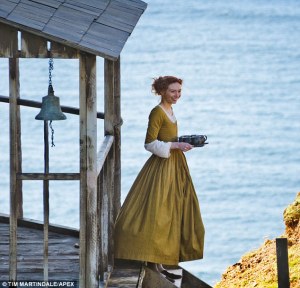
- By ‘we’ I mean me – or, more properly, I. And maybe you.
- Here I’m talking about both the ‘bad’ guy (antagonist), and the character who clearly intends to be the hero of the story but due to some issues, such as personality defects or utterly appalling decision-making, causes mayhem and disaster, up to and occasionally including the end of the world (sit down, Arthur Dent; it wasn’t your fault). I’m very happy to entertain discussions (and even arguments) about all and any points raised here. Much as I love words such as protagonist and antagonist (and for that matter deuteragonist, which is a word I only learned yesterday and already find adorable) I’m lumping them all together for the purposes of this article.
I’ll give you an example. In the film Die Hard, we were invited to admire and give our attention to the flawed hero John McClane. I’d seen Bruce Willis in Moonlighting, I knew that twinkle, I was prepared to buy into the first of what turned out to be a very successful movie franchise. But partway through the film something odd happened (and I know I’m not alone – there’s an entire universe of women who’ve told me they felt the same): I found myself falling for the villain (Hans Gruber, played by Alan Rickman). The more he curled that lip and uttered his pithy psychopathic monosyllables, the more he threatened (and the more he became aware that he was losing control of his perfect crime) the more I liked him. There was something indefinably attractive about that character – he commanded a level of attention that I just couldn’t give to poor old McClane, who was forced to go to greater and greater lengths (from bodily harm to shootings to exploding half the building) in order to regain my interest.
Don’t let’s get hung up here on whether I’m talking about sexual attraction, the charisma of an intriguing individual, or the kind of stunned fascination a bird feels for the approaching snake – in Die Hard, they were all pretty much the same thing. Here was a masterful portrayal of a malicious, genuinely amoral character who would stop at nothing to achieve his goal, and who had planned from the beginning to kill, and intended to enjoy it – evil through and through, but, damn, did he look good on it! When the bad guy met his inevitable doom, I regretted it. I’d have reached out a hand to save him. The first time I watched Die Hard I dreamed about Hans Gruber – and, yes, it was one of those dreams. (And before I hear a ‘but…’ – I’ve seen Alan Rickman in films and plays where his character was not attractive. That’s acting.)
Of course, the character of John McClane himself was an antihero, of the type that tries to do everything for the best but pretty much messes up whatever he touches (although since it was an American film it got the obligatory happy ending). Attractive enough in his own right – but he spent the whole film playing catch-up to the villain.
Here’s another one. And for me it’s even more disturbing. I’m loving the brand new Starz/Neil Gaiman series ‘American Gods’, starring Ricky Whittle as one of my favourite book characters, Shadow Moon. I adore Shadow, and Whittle’s portrayal is spot on. This is definitely a flawed hero – an ex –con with a penchant for making friends by his fist. He doesn’t think he’s a hero – in fact, he’s so reluctant to play the role that it’s beginning to become apparent that he’s being slowly pressed into a mould that’s a very bad fit for him indeed. Who is doing the pressing? None other than (spoiler alert) Woden himself, Mr Wednesday, the one-eyed god whose potency is fed by conflict and war.
Played with a horrible and oily charm by Ian McShane, the once-mighty AllFather of Norse myth is now a seedy down-at-heel rogue on a road trip across America, trying to enlist the aid of other gods – from cultures as broad and diverse as the USA’s population – to come to his aid; for what purpose, we do not yet know. So far he’s scammed a first class flight ticket (and who among us wouldn’t do the same, if we could?), set up a bar fight, made a bit of lightning and robbed a bank (it’s early days yet). He’s also made love (on every level from a raised eyebrow to the full naked-girl-on-bed) to an assortment of women – he’s happy to turn his eye on anything female, and they all seem to respond to him. Creepy, right?
Strangely, not. In fact, I find myself watching intently to see who he’ll draw in next. The Mr Wednesday of American Gods is barely hanging on to godhood – Odin’s divine grace is not on show here. All the power he has lies in Ian McShane’s ability to show us a man who believes he is a god: a small-town sleazy snake-oil salesman. What on earth is attractive about that? But he is. God, he is.
I think that in part it’s about flaws. A man with faults is much easier to love than perfection. In fact, in my experience ‘perfection’ really only loves itself. But there’s more to it than that. I’ve known (in real life) snake-oil salesmen with a sweet line in patter and a charm that’s no more than a few microns deep. Most intelligent women (and it took me longer than most) will see through that kind of fakery. Wednesday, however, clearly believes the line he’s selling. He’s better (divinely better) than the average con artist. Hans Gruber, on the other hand, made no attempt to charm the victims of his heist, or indeed the members of the film audience. And yet, the attraction was there.
So what is going on in my head? That’s a question I’ll come back to, because there’s plenty more thinking to be done before I come to a conclusion. I’m still gathering evidence. There may be a list. Or it might be that I’m heading home to watch Die Hard again.
But I’ll leave you with this thought. If Shadow is the flawed hero, and Wednesday his companion – does that make Wednesday an antihero? Or a villain? Keep watching. You’ll find out.


Recent Comments